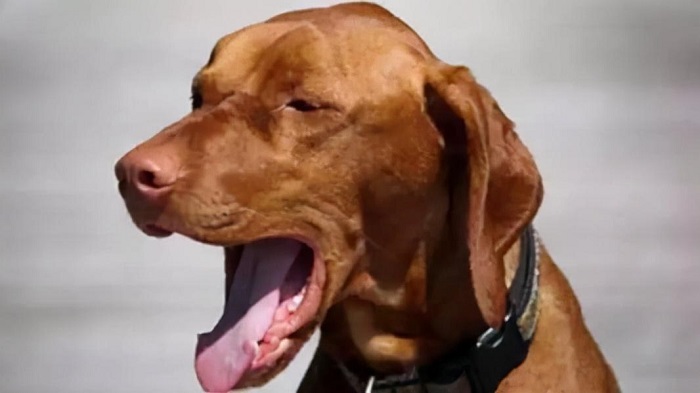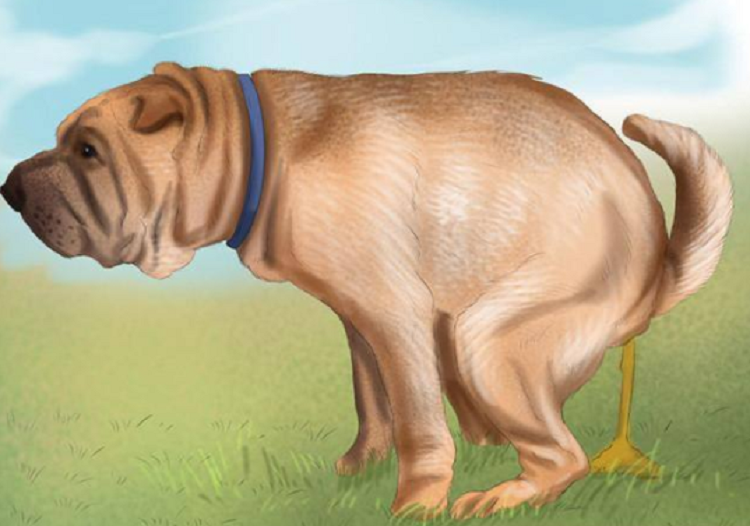As the mercury rises, the risk of heat exhaustion in dogs becomes a significant concern for pet owners. This moderate form of overheating can swiftly escalate into life-threatening conditions if not promptly recognized and managed. In this article, we’ll delve into the causes of heat exhaustion in dogs, its signs, and preventive measures to ensure your furry friend stays safe and healthy, especially during the summer’s sizzling days.
Signs and Symptoms of Heat Exhaustion in Dogs
Recognizing the early signs of heat exhaustion is crucial. Here’s a breakdown of what you might observe:
1. Initial Warning Signs:
- Heavy Panting: Even after moving to a cooler spot, your dog continues to pant excessively.
- Restlessness: Your dog seems uneasy and may not settle in one place.
- Frequent Stops: During walks or runs, your dog keeps stopping and lying down, indicating they’re trying to cool off.
- Excessive Thirst: Your dog frequently seeks water, even if it means ignoring your commands.
2. Advanced Symptoms:
- Breathing Difficulties: Your dog might show signs of respiratory distress.
- Excessive Drooling: This is a way dogs try to cool themselves down.
- Vomiting and Diarrhea: These are signs of severe distress.
- Collapse: In extreme cases, dogs might collapse due to exhaustion.
If these symptoms are ignored, they can escalate to life-threatening conditions like heat stroke, characterized by disorientation, seizures, coma, and potential organ failure.
What Are the Causes of Heat Exhaustion in Dogs?
Heat exhaustion is often a result of a trifecta of factors: soaring outdoor temperatures, rigorous physical activity, and underlying health issues that hinder a dog’s natural cooling mechanisms. Unlike humans, who can sweat to regulate body temperature, dogs primarily rely on panting to cool down. When the weather is stifling, their ability to stay cool becomes compromised, particularly if they are exposed to direct sunlight without access to shade or in high humidity environments.
Intense Exercise
Enthusiastic exercise, even in cooler climates, can push a dog’s body to the brink of overheating. This scenario is more prevalent among working breeds that undertake extended, high-intensity workouts or in the case of the “weekend warrior” effect, where usually inactive dogs suddenly engage in strenuous activities without proper conditioning. Breeds like Labrador Retrievers, Golden Retrievers, Springer Spaniels, and Pit Bulls are known for their high drive and endurance but can be at a higher risk of overexertion.
Age and Health Complications
Age and certain medical conditions can impede a dog’s ability to regulate their body temperature effectively. Very young puppies and senior dogs may struggle more with thermoregulation, making them susceptible to overheating. Obesity further compounds this issue by restricting efficient panting. Additionally, any respiratory or airway problems can severely impact a dog’s capacity to cool down through panting, a common issue among brachycephalic breeds such as French Bulldogs, Pugs, English Bulldogs, and Pekingese.
Environmental Factors
Lastly, dogs can overheat when trapped in excessively hot environments. Leaving a dog in a sealed car is a classic example, where internal temperatures can skyrocket. Similarly, dogs left outside without shade on boiling days or those transported in cargo holds lacking climate control are at grave risk. Any situation that exposes dogs to relentless high temperatures without relief can rapidly turn perilous.
Signs of Heat Exhaustion in Dogs
Recognizing the early signs of heat exhaustion is crucial for timely intervention. These signs include:
- Heavy panting even after moving to a cooler area
- Restlessness and frequent stops during walks or runs
- Excessive thirst, sometimes ignoring your commands to stop drinking water
- Difficulty breathing, drooling, vomiting, diarrhea, and in extreme cases, collapse
Preventive Measures Against Heat Exhaustion
To prevent heat exhaustion, consider these guidelines:
- Limit strenuous activities during peak heat hours and provide ample breaks in shaded areas.
- Ensure your dog has unrestricted access to cool, fresh water.
- Use damp towels or specialized cooling mats to assist in lowering their body temperature.
- Regular grooming to manage excess fur that traps heat.
- Closely monitor your dog’s behavior and well-being, especially on warm days.
How Do Vets Diagnose Heat Exhaustion In Dogs?
The diagnosis of heat exhaustion in dogs is typically made through a careful assessment of the dog’s history, behavior, and physical symptoms. Veterinarians consider factors such as the dog’s exposure to high temperatures, whether they have been involved in rigorous activities, or if they have been left in a hot environment like a parked car. A crucial indicator is the dog’s body temperature; while the normal range for a dog’s body temperature is between 100-102.5 degrees Fahrenheit, signs of heat exhaustion usually manifest when the temperature is significantly higher.
There isn’t a specific temperature threshold at which symptoms of heat exhaustion or heat stroke occur, as it can vary among individual dogs. However, general guidelines suggest that dogs may exhibit signs of heat exhaustion when their body temperature exceeds 105 degrees Fahrenheit. Severe signs of heatstroke are more likely in dogs with temperatures of 109 degrees Fahrenheit or higher, but these can also appear at lower temperatures.
To determine the severity of heat exhaustion and to rule out potential complications such as liver damage, kidney failure, or bleeding disorders, veterinarians may resort to blood tests and imaging studies like ultrasound or X-rays. These diagnostic tools provide valuable insights into the extent of internal damage and help guide the course of treatment.
How To Treat Heat Exhaustion
When a dog exhibits signs of overheating, time is of the essence. Act with urgency and make every effort to get your furry friend to a veterinary clinic immediately. This imperative step becomes even more crucial when the dog fails to cool down and recover after being moved to a cooler environment.
The cornerstone of early intervention is to reduce the dog’s body temperature without causing additional problems through excessive cooling. Even on your way to the vet, you can assist in the cooling process by dampening your dog with tepid water. It is essential to avoid the use of freezing water or ice, as these can exacerbate the situation. You can pour tepid water over your dog or gently pat them down with a damp cloth. However, do not leave the wet cloth on your dog, as it can create an insulating layer that traps heat.
To expedite the cooling process, you can direct a high-powered fan towards your damp dog or leave the car windows open while en route to the vet. If your dog is fully conscious and appears willing to drink, offer them a bowl of cool water. However, if your dog is disoriented or shows no interest in drinking, do not force water into their mouth.
For dogs displaying severe symptoms of heat exhaustion or those that do not appear to be completely recovered after initial cooling measures, professional veterinary care is imperative. The medical treatment will involve comprehensive cooling strategies, rehydration therapy, and supportive care, which may include intravenous fluids, oxygen therapy, and protective measures for vital organs such as the kidneys, liver, brain, and digestive system.
How to Prevent Heat Exhaustion
The most prudent approach to mitigate the risk of heat exhaustion in your furry companion is through meticulous planning and proactive prevention. On scorching days, it is crucial to maintain your dog’s coolness. Avoid vigorous exercise or extended walks during the peak heat hours of the day and opt for early morning or post-sunset strolls when the ambient temperature is more tolerable. Always carry water on your walks and seek shaded pathways whenever possible.
For dogs that are either very young, elderly, overweight, or have respiratory issues, they should be kept indoors with a fan and/or air conditioning running continuously on hot days. These vulnerable dogs should only be taken outside for brief bathroom breaks during temperature spikes, and they must always have access to fresh water.
It may seem like a no-brainer for many dog owners, but it bears repeating: never leave your pet unattended in a parked car, even if the weather seems relatively mild. Estimates vary, but most sources concur that the internal temperature of a car can be a staggering 30-40 degrees higher than the external temperature. A dog can easily succumb to overheating inside a car even on a day that doesn’t appear excessively hot to humans. Additionally, avoid flying with your dog in an unregulated cargo hold, particularly if hot weather is expected during the flight or if your pup has underlying health issues that impair their ability to pant effectively.





